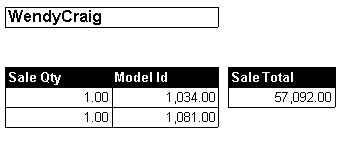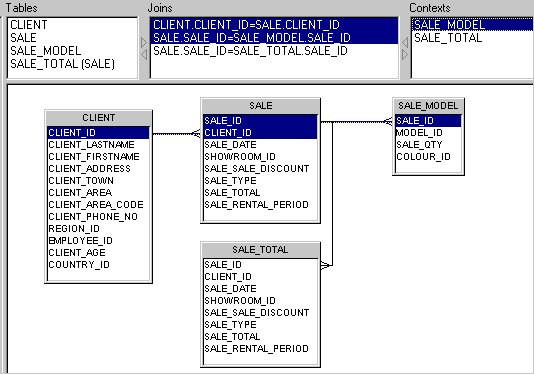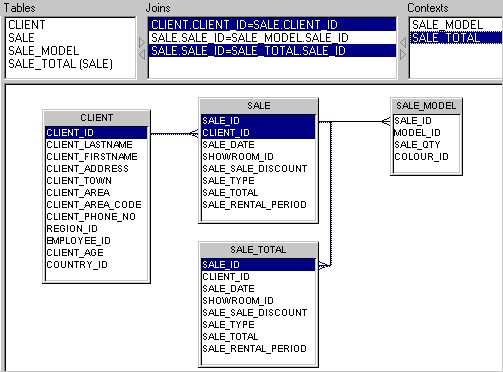About
The fan trap in a BOBJ context.
A fan trap is a join path problem returning too many rows.
Articles Related
Solved by
The original query which returned the Cartesian product for Wendy Craig, must return the following table when run with the above solution:
Using an alias and context
The fan trap using dimension objects in the query is solved by using an BOBJ - Alias and BOBJ - Context.
And multiple SQL Statements for Each Context checked (File > Parameters > SQl Tab)
Using Multiple SQL Statements for each measure
If you have only measure objects defined for both tables at the many end of the serial one-to-many joins, then you can use the Universe Parameters option Multiple SQL Statements for Each Measure.
Multiple SQL Statements for Each Measure checked (File > Parameters > SQl Tab)
This forces the generation of separate SQL queries for each measure that appears in the Query pane.
You cannot use this method to generate multiple queries for dimensions. If an end user can include dimensions from any of the tables that reference the measure objects in the query, then you must use an alias and context to resolve the fan trap.
Detected by
- Visual analysis of table schema.
You cannot automatically detect fan traps. You need to visually examine the direction of the cardinalities displayed in the table schema.




